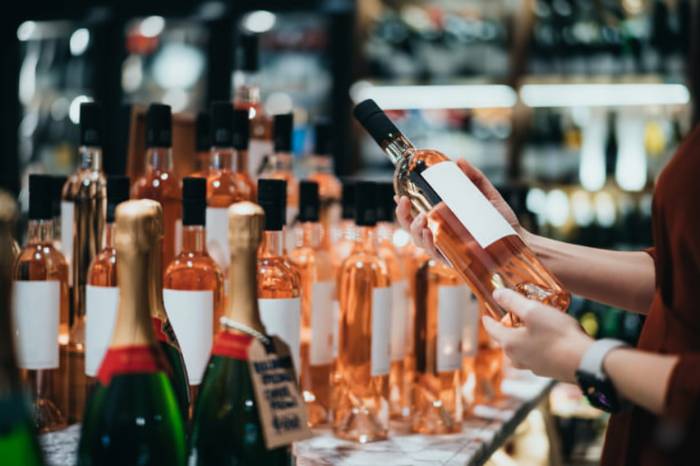Chinese Researchers Develop IoT System to Monitor and Predict Rosé Wine Quality During Storage
New technology uses real-time sensors and deep learning to help wineries detect spoilage risks and maintain product consistency
2025-09-25

Researchers at the College of Enology, Northwest A&F University in Xianyang, China, have developed a new Internet of Things (IoT)-enabled system designed to monitor and predict key physicochemical parameters during the storage of rosé wine. The system, described in a recent article published in the journal Inventions, aims to address the challenges of maintaining wine quality during storage by providing real-time data on factors that influence spoilage and flavor deterioration.
The project was led by Xu Zhang and a team of colleagues who focused on three critical parameters: dissolved oxygen, electrical conductivity, and temperature. These factors are known to play a significant role in the chemical stability and sensory qualities of rosé wine. Unlike red or white wines, rosé is particularly sensitive to changes in its storage environment, making precise monitoring essential for producers seeking to maintain product consistency and extend shelf life.
The monitoring device uses a compact multi-parameter sensor capable of measuring all three variables simultaneously. The sensor is constructed from corrosion-resistant stainless steel and is designed for easy integration into various types of wine storage containers, including glass tanks and oak barrels. Data collected by the sensor are transmitted via a 4G wireless module to the TLINK cloud platform, where they are stored, visualized, and made accessible for further analysis.
The research team conducted an 80-day experiment from April to July 2025 in an underground wine cellar at their university. The device was installed in a sealed glass fermentation tank filled with rosé wine. Throughout the experiment, the system collected data every minute, resulting in over 115,000 data points per parameter. The researchers observed that all three parameters—dissolved oxygen, conductivity, and temperature—showed distinct trends over time. For example, dissolved oxygen levels increased early in storage before stabilizing, while temperature changes reflected seasonal variations outside the cellar.
To enhance the value of this continuous monitoring, the team applied advanced deep learning models to predict future trends in these parameters. They tested Long Short-Term Memory (LSTM), Gated Recurrent Unit (GRU), Temporal Convolutional Network (TCN), and traditional ARIMA statistical models using the collected time-series data. The TCN model delivered the highest predictive accuracy for all three parameters, with coefficients of determination (R²) above 0.95 for each variable. LSTM and GRU models also performed well but were slightly less accurate than TCN. The ARIMA model lagged behind the deep learning approaches.
The cloud-based system allows users to view real-time data through a web interface that displays current readings, historical trends, device status, and environmental information such as weather conditions at the storage site. Alerts can be configured to notify winery staff if any parameter exceeds preset thresholds or if there is a loss of connectivity. This feature provides an early warning mechanism for potential quality issues or equipment failures.
The study highlights several practical benefits for wineries. By continuously tracking multiple physicochemical parameters and applying predictive analytics, producers can detect abnormal changes that may signal spoilage or suboptimal storage conditions before they impact wine quality. This approach supports more informed decisions about storage management, such as adjusting temperature controls or improving container sealing.
However, the researchers note some limitations. The system requires reliable 4G coverage and access to AC power, which may restrict deployment in some cellars or remote locations. The need for regular disinfection of sensors before installation is also emphasized to prevent microbial contamination.
This IoT-enabled monitoring framework represents a step forward in digital winemaking practices by combining real-time sensing with machine learning-based forecasting. While previous systems have focused on single-parameter monitoring or offline analysis, this integrated solution offers wineries a more comprehensive tool for managing quality during storage—a critical phase that can determine the final character and marketability of rosé wines.
The research was supported by grants from Northwest A&F University and Shanghai Guolan Agricultural Products Co., Ltd., with additional assistance from local wineries that provided facilities and grape samples for testing. Data from the study are available upon request due to ongoing experimental work.
As consumer demand for high-quality rosé continues to grow worldwide, such technological innovations may become increasingly important for producers seeking to ensure product consistency and respond quickly to potential risks during storage.
Founded in 2007, Vinetur® is a registered trademark of VGSC S.L. with a long history in the wine industry.
VGSC, S.L. with VAT number B70255591 is a spanish company legally registered in the Commercial Register of the city of Santiago de Compostela, with registration number: Bulletin 181, Reference 356049 in Volume 13, Page 107, Section 6, Sheet 45028, Entry 2.
Email: [email protected]
Headquarters and offices located in Vilagarcia de Arousa, Spain.